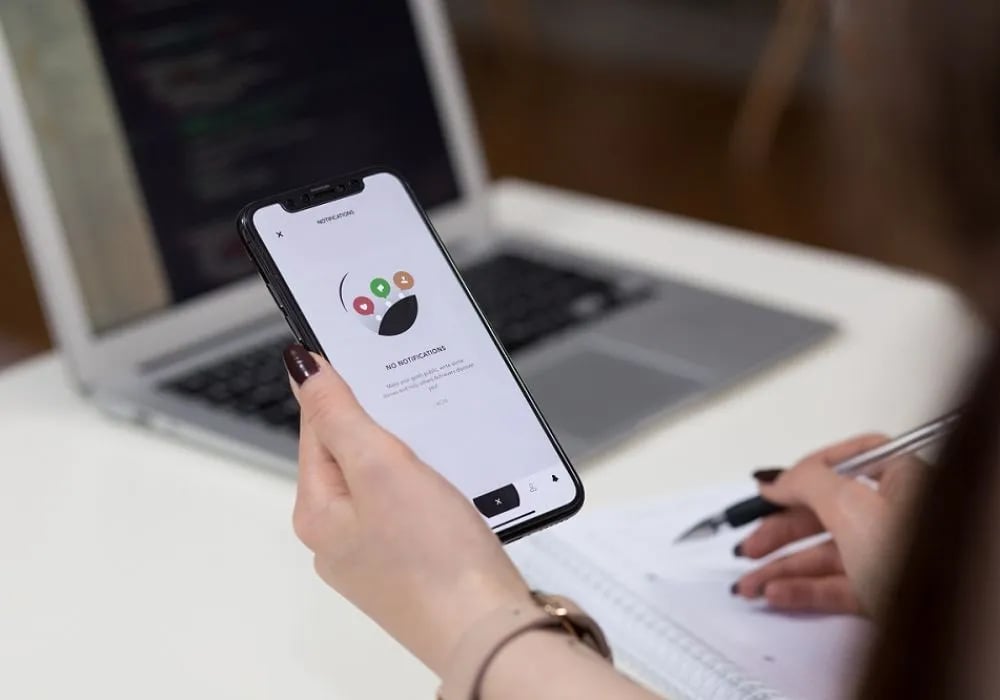May 19, 2023
User Experience Testing: Blazing The Trail For Tech Organizations

With technology being more user-centric than ever, user-experience design has emerged as an approach to strengthen a product's usability. While some of the aspects of UX or user experience design are intuitive, creating a user-centric application or software is done around the scope of the project, the user's needs, the creator's objectives, and the likely pain points.
But why is UX important for any business?
User experience (UX) directly impacts customer satisfaction, loyalty, and ultimately, business success. Firstly, a positive UX enhances customer engagement by providing intuitive, efficient, and enjoyable interactions with a product or service. It reduces friction, streamlines processes, and creates a seamless user journey, leading to higher user retention and conversion rates.
Secondly, a great UX fosters brand loyalty and advocacy. When customers have positive experiences, they are more likely to return, recommend the product to others, and become brand ambassadors. By prioritizing UX, businesses can differentiate themselves, gain a competitive edge, and build long-term relationships with customers, driving growth and profitability.
And with that comes the role of UX testing!
UX testing or user experience testing allows testers to dive across all these criteria and create more sustainable business solutions for tech-driven organizations. However, ensuring effective output from any UX testing initiatives requires the active involvement of the stakeholders. These must include:
Business analysts, developers, testers, and most importantly, The Customers!
Though involving users may overwhelm UX designers and even add to the project's overall cost, testing a product for the end-user experience allows the creation of more competitive yet reliable technologies.
Ultimately, it is the approach that defines the success of UX testing initiatives or usability testing services you hire from a third-party QA company. From the selection of methods to guidelines and containing everything that can save the bank and deadlines, this blog underlines how tech organizations could yield the potential of UX testing.Therefore, it becomes necessary to dive into the details of creating a user-centric design while touching on the necessary UX testing methodologies, UX testing tools, and everything that could help attain measurable success.
Understanding User-centric Design
User-centric design, also known as human-centered design, is an approach that prioritizes the needs, preferences, and behaviors of users throughout the design and development process of a product or service. It involves understanding the users' goals, conducting research, and incorporating their feedback to create a user experience that is intuitive, efficient, and enjoyable.

How To Test For User-centric Design?
Testing user-centric design involves various methods and techniques to gather feedback and evaluate the usability and effectiveness of the design from the users' perspective. Here are some common approaches for testing user-centric design:
-
Usability Testing: Usability testing involves observing users as they interact with a prototype or a working version of the product. Usability tests assess how easily users can accomplish tasks, identify pain points, and gather insights into user behavior and preferences.
Learn how important usability testing is to healthcare!
Read The Blog: Equalizing The Usability and Safety Of eHealthcare System With QA.
-
Surveys and Questionnaires: Surveys and questionnaires allow designers to collect quantitative and qualitative data on user satisfaction, preferences, and overall user experience. They can be administered before and after product deployment to gather insights and measure improvements.
-
Interviews and Focus Groups: These methods involve engaging users in structured or semi-structured interviews or group discussions to understand their needs, gather feedback, and gain deeper insights into their experiences, expectations, and pain points.
-
A/B Testing: A/B testing involves comparing two or more design versions to find out which performs better based on predefined metrics. This allows designers to validate design choices and make data-driven decisions.
-
Eye Tracking: Eye tracking technology helps track and analyze users' eye movements and gaze patterns while they interact with a design. This provides insights into visual attention, information hierarchy, and usability of the interface.
-
Analytics and Heatmaps: Analyzing user behavior using tools like Google Analytics or Heatmaps can provide a lot of data on how users engage with the product, helping identify areas for improvement.
-
Remote Testing: Remote testing allows designers to gather feedback and conduct usability tests with participants located in different locations. This method enables testing with a diverse user base and saves time and cost associated with travel.
Leveraging these testing methods could enable designers to iteratively improve the design, validate assumptions, uncover usability issues, and ensure that the product effectively meets user needs and expectations.
Advanced UX Testing Methodologies
As the field of user experience (UX) continues to evolve, several advanced UX testing methodologies are emerging to meet the demands of the future. From digging opportunities with usability testing and other traditional techniques, here are a few examples of advanced testing practices that can redefine UX:-
Biometric Testing
This methodology involves measuring physiological responses such as eye movements, heart rate, skin conductance, and facial expressions to gain deeper insights into user emotional states, attention, and engagement. Biometric testing helps designers understand subconscious reactions and fine-tune UX based on objective data.
-
Virtual Reality (VR) and Augmented Reality (AR) Testing
With the rise of VR and AR technologies, UX testing methods are adapting to assess the user experience within immersive environments. UX professionals can conduct testing in virtual or augmented realities to evaluate interactions, usability, and user satisfaction within these unique contexts.
-
Neurological Testing
Neurological testing utilizes brain imaging techniques such as EEG (electroencephalography) and fMRI (functional magnetic resonance imaging) to study brain activity and cognitive processes during user interactions. By understanding how the brain responds to UX stimuli, designers can enhance user experiences at a deeper cognitive level.
-
Voice User Interface (VUI) Testing
As voice assistants and voice-controlled interfaces become more prevalent, VUI testing focuses on evaluating the usability, accuracy, and user satisfaction of voice interactions. This involves testing natural language processing, voice recognition accuracy, and user comprehension within voice-driven interfaces.
-
Multimodal Testing
Multimodal testing involves assessing user experiences that combine different modes of interaction, such as touch, voice, gestures, and haptic feedback. It aims to optimize the integration and synchronization of these interaction modalities to create seamless and intuitive user experiences.
-
Emotional Testing
Emotional testing methods focus on understanding and measuring the emotional impact of a UX design on users. This can be achieved through techniques like sentiment analysis, facial expression recognition, and self-reporting to gauge emotional responses and tailor UX accordingly.
-
Cross-Cultural and Global Testing
With the global reach of digital products and services, UX testing needs to address cross-cultural differences and adapt to diverse user groups. Cross-cultural testing methodologies involve considering cultural nuances, language preferences, and localization requirements to ensure a seamless user experience across different regions.
UX Testing Tools – The Trending Ones
Several UX testing tools are trending in the industry due to their advanced features and capabilities. Here are a few examples:
- UserTesting: UserTesting is a popular remote user testing platform that provides access to a large pool of participants for usability testing. It offers video recordings, screen capture, and user feedback to gain insights into user behavior.
- Optimal Workshop: Optimal Workshop offers a suite of tools for conducting UX research, including Treejack for information architecture testing, OptimalSort for card sorting, and Chalkmark for click testing. These tools help evaluate the effectiveness and efficiency of website and app designs.
- Maze: Maze is a user testing and design insights platform that allows designers to create and run usability tests, collect feedback, and generate actionable insights. It integrates with popular design tools like Sketch and Figma for a seamless workflow.
- Hotjar: Hotjar combines various testing tools, including heatmaps, session recordings, surveys, and user feedback, to understand user behavior and optimize website usability. It provides visual representations of user interactions and engagement.
- Lookback: Lookback is a user research platform that enables remote user testing and live interviews. It offers features like screen sharing, video recording, and real-time notetaking to capture valuable insights.
- Validately: Validately provides a range of user research tools, including moderated and unmoderated usability testing, card sorting, and surveys. It allows researchers to recruit participants, conduct tests, and analyze results on one platform.
- Usabilla: Usabilla offers a suite of user feedback and usability testing tools, allowing designers to collect feedback, conduct on-site surveys, and run remote usability tests to improve the user experience.
Usability Is Critical To User Experience
Learn How We Handle It At BugRaptors
Measuring Success
When delivering the perfect user experience, fostering data and usability research becomes essential. Thus, well-planned design decisions could be a great help in defining the success of a digital product. A great design could showcase enhanced customer satisfaction with an added retention rate, from increased website traffic to improved conversions or yielding performance on enterprise software.
On the other hand, any decisions made with limited information or design concerns could be costly and disastrous. However, there is no particular UX methodology or testing technique that could answer all your questions at once. It is crucial to identify the benefits as well as limitations of all the techniques to cultivate the ultimate user experience.
All in all, when you are on your way to starting with a fresh perspective on technology, it is necessary that details like color selection, placement of buttons, and other UX-related factors must be checked. Also, the process could involve A/B testing techniques to understand which theme works best for the users.
Remember, creating good designs requires intuitive creativity as well as information that could make a design successful.
If you need professional assistance with UX testing to synthesize user feedback and locate the opportunities early during the development phase, consider taking expert advice from our UX testing team at BugRaptors.
For more information, feel free to extend your queries through info@bugraptors.com